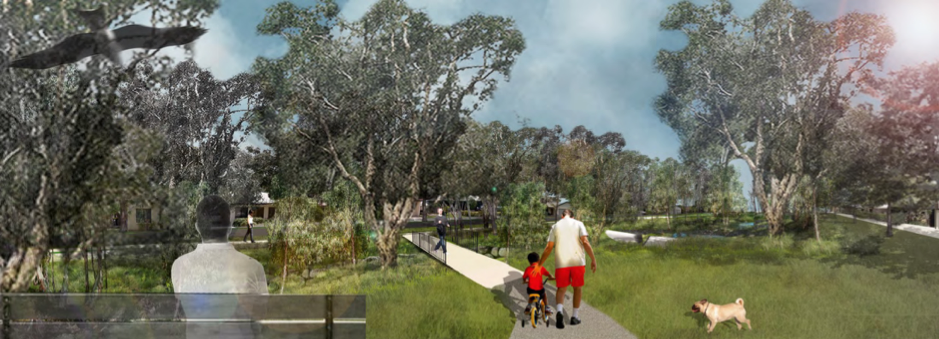Current Water Sensitive Performance
In 2018, the CRC for Water Sensitive Cities worked with stakeholders in Weipa, in Queensland’s far north, to develop ideas to make the town more liveable and sustainable. The town is transitioning—it started as a mining town, but it’s maturing and now has a more diverse community that’s interested in other economic opportunities, such as tourism. Introducing blue–green infrastructure is a way to help with this transition.
Overall, Weipa receives far more rainwater in a year than it actually uses, but its wet–dry tropical climate means the town has low or no rainfall for 6–8 months of the year. The challenge is to capture and store water during the wet season so that this resource is available during the dry season.
Weipa community members identified several motivating factors for wanting to create a water sensitive Weipa:
- improving liveability and sustainability
- supporting a growing population
- retaining people beyond their working life
- attracting and retaining skilled workforce and their families
- addressing community expectations
- increasing economic opportunities, especially tourism
- supporting Weipa’s transition towards a formal local council
- helping to establish Weipa as the ‘Capital of the Cape York’.


Change strategy: how to become more water sensitive
Working with stakeholders, the CRCWSC proposed five key ideas for a water sensitive Weipa:
Establish blue-green corridors along major pathways/roads in town, consisting of green, shady walk/bikeways and ‘living streams’ along road verges, existing pathways and drainage corridors. It is particularly important to make these multi-functional, active transport corridors attractive since the town is quite stretched out and daytime temperatures rarely drop below 30oC any time of the year. Additionally, these blue-green corridors increase amenity and liveability values for local residents and tourists, because they reduce dust and create natural ecosystems for native plants and animal habitats.
Enable underground wet-to-dry-season water storage, using decentralised capture and infiltration of stormwater to direct water to existing shallow groundwater aquifers during the wet season. In the dry season, the town can recover this water via existing bores. This process, also known as managed aquifer recharge, is practised quite widely across Australia and is the most economic option for seasonal storage and recovery if groundwater aquifers are available.
Create living streams in stormwater drains, to improve infiltration during the wet season, and encourage green, cool environments in the dry season. Living streams are re-creations of natural waterways along urban drainage networks. By slowing stormwater flows and retaining some water, they help reduce erosion, increase infiltration, support native vegetation and treat stormwater to reduce pollution.
Establish an irrigation water network along blue-green corridors, to support lush parks, safe sports grounds and attractive school areas. This irrigation water could come from existing groundwater bores, or be recycled water from the wastewater treatment plant. As well as helping create a cooler environment, an irrigation network could remove major peak flows from the town water supplies, and hence improve capacity and reliability for the residents.
Produce fresh local fruits and vegetables using recycled water and compost from the wastewater treatment plant. This idea could create local employment and economic opportunities, improve the availability and quality of fresh food (currently all is transported in) as well as reducing water pollution and landfill volume.
Other ideas included:
- offsetting power costs for the irrigation network, by encouraging solar hot water systems be installed across the town
- installing low-pressure, pumped sewer systems in new development areas, to avoid/minimise fill requirements
- establishing a town-wide smart network, to monitor and control all water-related assets
- encouraging green landscapes, an urban forest with native trees and water features, which further increase the economic value for property owners, businesses, tourism operators and the town generally
- considering expanding the caravan park, to create additional capacity, value and attraction for tourists.
Research relevant to Weipa
- Transitioning Weipa towards a water sensitive town explores context, key challenges and opportunities, Weipa’s transition process, community views, 10 key ideas, and budget estimates for transitioning Weipa to a Water Sensitive Town.